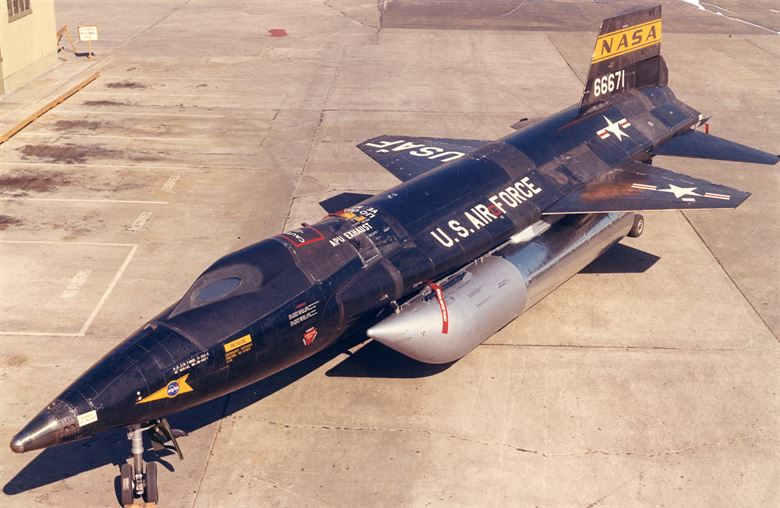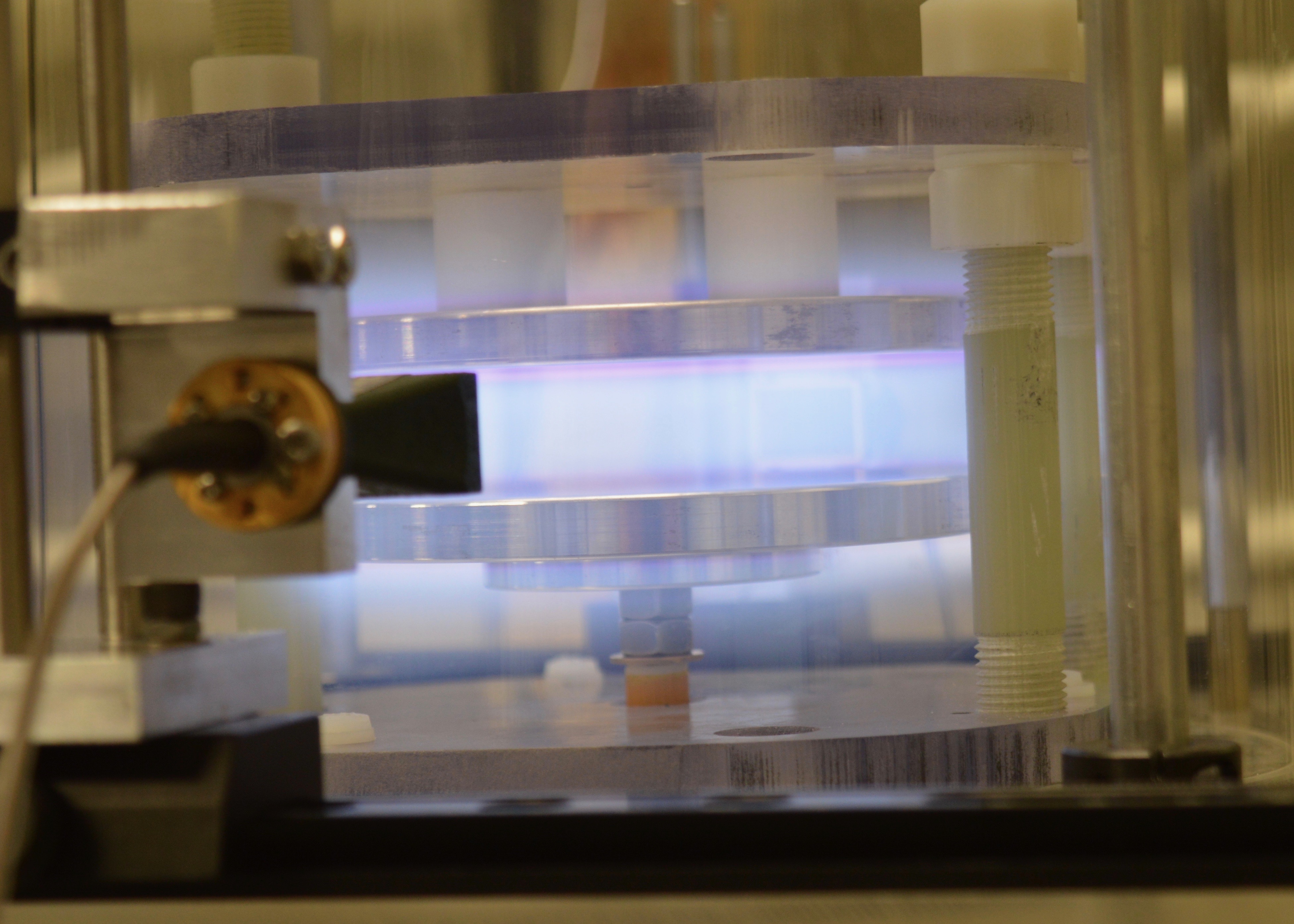Projects
These are the main current projects of Prof. Poggie's group.
Overview
Work in Prof. Poggie's group includes:
Applied Hypersonic Aerodynamics
There are a few topics in hypersonic aerodynamics that have been neglected, perhaps because they are somewhat too applied to fit nicely into conventional academic research. One of these topics is the influence of geometric irregularities on aerodynamic heating: the effect of steps, joints, gaps, protuberances, and roughness. Our research team has investigated flow in a wing-elevon cove (Alviani et al., 2020) and in the gap between a movable control fin and a missile fuselage (Fano et al., 2020). In ongoing work, we are exploring the effect of geometric irregularities on transition, turbulence, and shock-wave / boundary-layer interaction, and are supporting Air Force Research Laboratory flight test activities.
Some flowfield animations and other details from our work on hypersonic aerodynamics are available here:
This work is supported financially by the Air Force Research Laboratory and with computer hours from the DoD High Performance Computing Modernization Program. The research team includes Purdue University, the University of Tennessee, and the University of Dayton Research Institute.
Hypersonic Laminar-Turbulent Transition
Aerodynamic heating is arguably the most important consideration in hypersonic flight: it drives hypersonic design. Our inability to accurately predict the location of transition from laminar to turbulent flow leads to significant uncertainty in predictions of aeroheating.
Ideally, we would mitigate this lack of knowledge through flight testing, but this is expensive and risky. (Consider, for example, the problems with the 2008 HyBoLT and the 2012 HIFiRE-5 flight experiments.) Quiet wind tunnels, such as Purdue's BAM6QT, offer a promising alternative, but there are few such tunnels, with limited flow conditions (as of 2019). We are left with noisy, conventional hypersonic wind tunnels for much of the research, development, testing, and evaluation for hypersonic systems. These tunnels would be much more valuable for design if we could predict the effect of facility noise on experiments carried out in these facilities.
To this end, we are working on predicting hypersonic laminar-turbulent transition using direct numerical simulation. The goals to are predict the acoustic field radiated by the turbulent boundary layers on the sidewalls of a hypersonic wind tunnel, and then investigate the effect of this noise on laminar-turbulent transition in the flow over a wind tunnel test article. If successful, the results will help us understand what's happening in experiments, and can be used to validate reduced-order models that then can be used for design.
This work is being carried out in collaboration with Prof. Lian Duan, at The Ohio State University. It is supported by a grant from the Office of Naval Research (Technical Monitor: Dr. Eric Marineau), and with computer hours under a DoD HPCMP Frontier Project.
In recent work, we have carried out a preliminary analysis of a hypersonic wind tunnel experiment (Andrews and Poggie, 2019) and we have provided support for post-flight analysis of Air Force Research Laboratory flight tests. (Jewell et al., 2018; Juliano et al., 2018).
Compressible Turbulent Flow
Some flowfield animations from our work on compressible turbulent flow are available here:
Separation Unsteadiness
A pilot, or even someone who has flown a paper airplane, is familiar with the buffeting that comes with airfoil stall. This effect is the result of separation unsteadiness. Separation at low speed is bad enough. At high speeds, the moving separation region carries a shock. The shock motion introduces extreme fluctuations in pressure and temperature at the aircraft surface. To make matters worse, the separation motion tends to occur in a low frequency range that can overlap with structural resonance frequencies. As a result, unsteady shock-wave / boundary-layer interaction acts like a hot hammer pounding on the aircraft.
Our research team has been working on identifying the origin of low-frequency shock unsteadiness, and on mitigating its effects through flow control. In recent work, we have identified a particular flow pattern in the incoming turbulent boundary layer that tends to precede shock motion (Porter and Poggie, 2019). If this pattern is artificially introduced into the flow, for example with a phased array of plasma actuators, the shock motion can be locked into the forcing (Poggie, 2019). These results motivate a flow control scheme for sensing and canceling these patterns.
We have also recently investigated the effect of confinement by sidewalls on separation unsteadiness (Poggie and Porter, 2019), and explored a flow with significant reattachment unsteadiness, but a fixed separation point (Deshpande and Poggie, 2019).
Our work in this area has been supported by a grant from the Air Force Office of Scientific Research (Technical Monitor: Dr. Ivett Leyva) and with computer hours under a 2016-2017 DoE INCITE Award.
Some flowfield animations from our recent projects are available here:
Plasmas in Aerospace Applications
A plasma is an ionized gas, a gas in which some of the molecules have lost their electrons. (Strictly speaking, a plasma is also quasi-neutral, with nearly an exact balance postitive and negative charge. Nonetheless, charged regions, such as sheaths, are often loosely called plasma.) Plasmas can occur in aerospace applications either through thermal ionization, as in atmospheric entry from space, or through electron impact ionization, as in an electrical discharge.
A plasma interacts with an aerodynamic flow through the generation of new chemical species, through electromagnetic forces, and through resistive heating. These mechanisms offer the opportunity for ignition and combustion enhancement (a high-tech spark plug) and for flow control (plasma actuators). The AIAA Plasmadynamics and Lasers Technical Committee has published an article on the status and future directions of plasmas in aerospace applications (Poggie et al., 2015).
In the last few years, Prof. Poggie's research team has studied nanosecond-pulse electrical discharges (Bisek et al., 2014; Poggie, 2015; Piskin et al., 2019) and flow control through thermal energy deposition (Gutierrez and Poggie, 2018; Deshpande and Poggie, 2018). We are also investigating driving flow instabilities and receptive modes through specific forcing patterns that may be implemented in the future via a phased array of plasma actuators (Andrews and Poggie, 2019; Poggie, 2019). See the Cold Plasmas Preeminent Team web page for for an overview of the plasma research going on at Purdue.
Operational Mapping and Analytics
An animated map of the World War II Battle of Smolensk from Purdue's OPMAPS Project:
A new area under development for our research team is Operational Mapping and Analytics (OPMAPS). In this work, we are supporting the research of Dr. Sorin Matei and Dr. Robert Kirchubel to interpret data on historical battles and develop predictive analytical tools to help military commanders digest the flood of information that comes from an ongoing conflict.
We are working on what we call the battle flow model, with a first application to the 1863 Battle of Gettysburg in the US Civil War. The approach aims to replace the wargame pieces of discrete agent models with a continuous, probabilistic mathematical approach.

